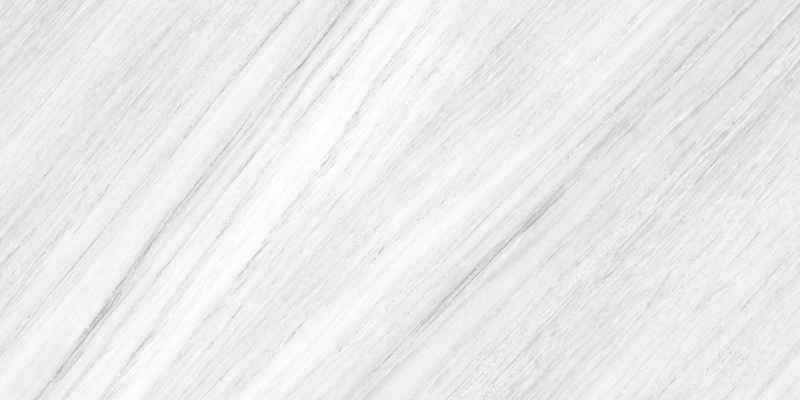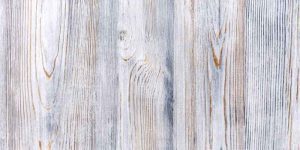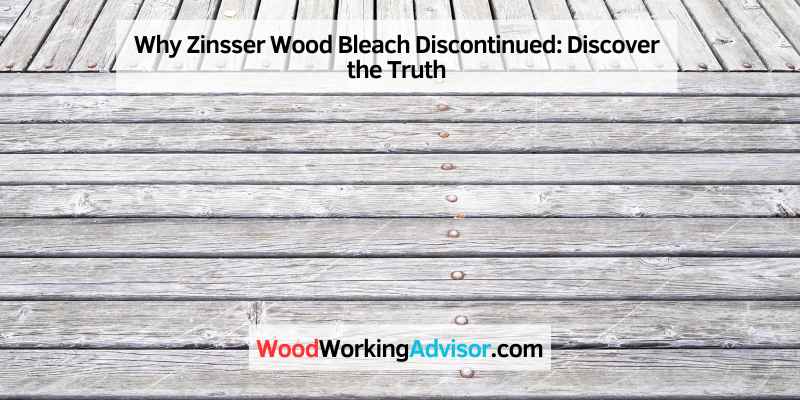Zinsser Wood Bleach was discontinued because the product did not meet regulatory requirements for low VOC (volatile organic compounds) emissions. This led to the discontinuation of the product in compliance with the environmental regulations.
Zinsser Wood Bleach is a product that was commonly used to brighten indoor wooden surfaces such as furniture, trim, paneling, and floors. However, the discontinuation of the product was due to its inability to meet the regulatory requirements for low VOC emissions.
As a result, Zinsser Wood Bleach was phased out, leaving many people struggling to find a suitable replacement. Fortunately, there are many alternatives available in the market such as hydrogen peroxide, oxalic acid, and two-part bleach made with sodium hydroxide and hydrogen peroxide. These alternatives might offer almost similar results as Zinsser Wood Bleach with some slight differences. Thus, it’s essential to understand the bleaching process before selecting an alternative.
Alternatives To Zinsser Wood Bleach
Zinsser Wood Bleach has been discontinued, but there are several alternative products that can be used for wood bleaching, such as Real Milk Paint Oxalic Acid Wood Bleach, Daly’s Wood Bleach Solution Kit, and Clorox Outdoor Bleach. Another effective substitute for wood bleach is hydrogen peroxide, which is cheap and leaves no residue on the wood’s surface.
However, for a true wood bleach, two-part bleach, made with sodium hydroxide and hydrogen peroxide, is the best option. It’s inexpensive and designed to alter the color of the wood.
Zinsser Wood Bleach was a reliable product for bleaching wood until it got discontinued without any apparent reason. If you’re looking to bleach your wood, don’t worry; there are various alternatives to it. Here are the most effective ones you can use:
Oxalic Acid Wood Bleach
Oxalic acid is a popular choice for removing stains and scratches from wood. It’s available in crystal form, which can be dissolved in water. It’s relatively cheap and easily accessible online or at any hardware store. Oxalic acid works best on hardwoods, such as oak, ash, and birch, and it’s safe to use on unfinished wood.
Clorox Outdoor Bleach
If you’re planning to bleach outdoor wood, using Clorox outdoor bleach is the way to go. This bleach is designed specifically for outdoor use, and it can clean and brighten decks, fences, and outdoor furniture. It’s safe to use on wood as it won’t damage its surface.
DIY Hydrogen Peroxide Bleach
Hydrogen peroxide is widely used as a disinfectant, but it can also be used to bleach wood. It’s safe to use on unfinished wood and won’t damage its surface. You can make your DIY hydrogen peroxide bleach by mixing equal parts of hydrogen peroxide and water. Apply the solution to the wood with a cloth and let it soak in for about an hour. After that, rinse the wood with water and let it dry.
Two-part Bleach
Two-part bleach is an effective way to bleach wood. It’s made up of two main ingredients, sodium hydroxide and hydrogen peroxide. When mixed, they cause a chemical reaction that alters the color of the wood. The two-part bleach is the only true wood bleach, and it’s relatively cheap and easy to get. It can effectively bleach even heavily stained wood and bring back its natural beauty.
In conclusion, there are various alternatives to Zinsser Wood Bleach that you can use to bleach your wood effectively. Whether you use Oxalic acid wood bleach, Clorox outdoor bleach, DIY Hydrogen Peroxide Bleach, or two-part bleach, you can rest assured that your wood will come out clean and bright.
The Process Of Bleaching Wood
Zinsser Wood Bleach, a popular solution for bleaching wood, has been discontinued for reasons unknown. To achieve the same effect, hydrogen peroxide can be used as a substitute. However, two-part bleach made with sodium hydroxide and hydrogen peroxide is the only true “wood bleach” that alters the color of the wood while still being inexpensive and easy to obtain.
Choosing The Right Bleach For Your Project
When working with wood, it’s important to choose the right bleach for your project. There are several different types of bleach available on the market, each with its own strengths and weaknesses. One of the most popular wood bleaches was Zinsser Wood Bleach, but it has since been discontinued. Oxalic acid and two-part bleach are other options that can work just as well.
Preparing The Wood
Before you begin bleaching your wood, it’s important to properly prepare the surface. Start by removing any existing finish or coating from the wood, and then sand it down until it is smooth and free from any blemishes. You should also make sure the surface is clean and dry before proceeding.
Applying The Bleach
Once your wood is prepped and ready, it’s time to apply the bleach. Make sure to wear gloves and work in a well-ventilated area, as bleach can be harmful if inhaled or exposed to skin. Use a brush or sponge to apply the bleach evenly across the surface of the wood, making sure to cover every inch. Work in small sections, as the bleach can dry quickly.
Neutralizing The Surface
After you have applied the bleach, it’s important to neutralize the surface. Vinegar or oxalic acid can be used to help neutralize the surface at this point. Once you have done this, rinse the surface thoroughly with water and dry it off with a towel. Sun drying for a few hours is recommended before proceeding.
Final Sanding
The final step in bleaching wood is to sand the surface down to remove any raised grain or other imperfections. Make sure to use fine-grit sandpaper for a smooth finish. Once you have finished sanding, you will be left with a beautifully bleached surface that is ready for staining or finishing.
In conclusion, while Zinsser Wood Bleach may have been discontinued, there are several other options available that can work just as well. By following these basic steps, you can create a beautifully bleached surface on your wood that is ready for any finishing touches.
Zinsser Wood Bleach Review
Zinsser Wood Bleach was discontinued due to changes in environmental regulations and safety concerns. While it was an effective product for bleaching and brightening wood surfaces, other alternatives such as hydrogen peroxide are now recommended for their safer and eco-friendly properties.
Positive Aspects Of Zinsser Wood Bleach
Zinsser Wood Bleach had been a popular choice among DIY enthusiasts, furniture restorers, and professionals alike. The significant advantage of using this bleach was its effectiveness in removing stains like ink, watermarks, and mold from wood surfaces. It was also useful in lightening the wood’s natural color, bringing it back to its original state.
Drawbacks Of Zinsser Wood Bleach
However, Zinsser discontinued this product, and one of the reported reasons was its potential health hazard. The bleach contained sodium hypochlorite, which is a strong oxidizing agent that could cause skin irritation, respiratory problems, and other health issues if not handled carefully. Another drawback was that it could weaken the wood’s fibers and make the surface texture rough.
Users’ Reviews And Feedback
According to users’ reviews and feedback, Zinsser Wood Bleach was a reliable product that gave fantastic results when used correctly. However, some complained that it could alter the wood’s natural color too much, leaving an uneven finish. Some users also found it challenging to apply the bleach evenly. Nevertheless, users praised its effectiveness in removing stubborn stains, reviving old wood, and prepping it for further treatment.
In conclusion, while Zinsser Wood Bleach is no longer available in the market, there are still effective alternatives such as Two-part bleach, chlorine bleach, and oxalic acid, which can provide similar results. It is essential to take precautions when using any kind of bleach, ensuring safe handling and disposal.
Impact Of Discontinuation

Zinsser Wood Bleach was discontinued, and the impact could be felt by those who relied on the product for brightening indoor wood surfaces. However, there are alternative options available like two-part bleach and hydrogen peroxide. Using these substitutes, people can still achieve a lighter and more vibrant look on their indoor wood surfaces.
Why Was Zinsser Wood Bleach Popular?
Zinsser Wood Bleach was a popular product among carpenters and homeowners for its ability to remove stains, discolorations, and dark patches from wood surfaces. It was especially useful in reviving old or antique wooden furniture, restoring their natural beauty, and allowing them to be refinished or repainted.
What Has Been The Impact Of The Discontinuation?
The discontinuation of Zinsser Wood Bleach has had a significant impact on the wood restoration industry. Many restoration professionals and DIY enthusiasts who relied on this product for their business and personal projects have been left with no alternatives. The lack of availability of the product has resulted in frustration and inconvenience for many users. Moreover, the discontinuation of the product has led to a decline in the revenue of retailers who depended on the sale of this product.
Response From Customers And Industry Experts
Customers and industry experts have expressed their disappointment over the discontinuation of Zinsser Wood Bleach. Many of them have taken to online forums and social media platforms to express their frustration and to seek alternatives. There have been several discussions and debates among industry experts about the reasons behind the discontinuation and the possibility of a comeback of the product.
While some believe that the discontinuation is due to the lack of demand, others speculate that it could be due to production issues or a shift in focus towards other product lines. Whatever the reason may be, the absence of Zinsser Wood Bleach has created a void in the market that has yet to be filled.
In conclusion, the discontinuation of Zinsser Wood Bleach has had a significant impact on the wood restoration industry. The lack of availability of the product has frustrated many users and affected the revenue of retailers who depended on its sales. Despite the disappointment, customers and industry experts are actively seeking alternatives and keeping a close eye on any possible developments regarding the future of the product.
Looking For Solutions
Zinsser Wood Bleach has been discontinued, leaving many woodworkers searching for alternative solutions. Hydrogen peroxide is an effective substitute that leaves no residue but water, while a two-part bleach made with sodium hydroxide and hydrogen peroxide is the only true “wood bleach” that alters the wood’s color.
Vinegar or oxalic acid can be used to neutralize the surface after bleaching, followed by a final rinse and touch-up sanding.
Efforts To Bring Back Zinsser Wood Bleach
Zinsser Wood Bleach was a popular product among DIY enthusiasts and professionals alike due to its efficacy in bleaching wood. However, it was discontinued, leaving many searching for alternative products. Some have speculated that the primary reason for its discontinuation was the cost of manufacturing, while others believe that the chemicals used in the product may have had harmful effects.
Currently, there are no concrete efforts to bring back Zinsser Wood Bleach. However, some online petitions and campaigns are urging the manufacturers to reconsider their decision.
Alternatives For The Discontinued Product
Numerous alternatives are available for Zinsser Wood Bleach. One of the most popular alternatives is using hydrogen peroxide, which is cheap and readily available. Peroxide is relatively harmless to wood properties and leaves no residue. Professional grade wood bleaching agents made of sodium hydroxide and hydrogen peroxide are also effective but can alter the color of the wood. Moreover, they require caution while handling due to their potentially hazardous nature.
Future Of Wood Bleaching Products
Wood Bleaching products are a crucial item in the woodworking industry, and the lack of Zinsser Wood Bleach has created a gap in the market. Several companies are striving to fill this gap with new products. It is expected that future wood bleaching products will be safer, more environmentally friendly and economically viable. However, it is important to note that no matter what product is used, proper handling guidelines must be followed to ensure safety for users and those around them.
In conclusion, while the discontinuation of Zinsser Wood Bleach left a significant void, many alternatives are available in the market that equally provide satisfactory bleaching results. Nonetheless, the woodworking industry eagerly looks forward to the development of safer, eco-friendly, and cost-effective bleaching methods.

Frequently Asked Questions On Why Was Zinsser Wood Bleach Discontinued
What Is A Good Substitute For Wood Bleach?
Hydrogen peroxide is a good substitute for wood bleach since it is cost-effective and does not affect the surface properties or leave residues. Some wood bleaching processes may use peroxide with caustics, but this can change the wood’s underlying color and alter its surface properties.
Alternatively, two-part bleach made with sodium hydroxide and hydrogen peroxide is the best bleach for wood, and vinegar or oxalic acid can be used to neutralize the surface. Chlorine bleach and oxalic acid are also wood bleaches but do not affect the wood’s natural color.
What Is The Best Bleach For Wood?
The best bleach for wood is a two-part bleach solution made with sodium hydroxide and hydrogen peroxide also known as A/B bleach. It is specifically designed to alter the color of wood, inexpensive and easy to get. Other wood bleaches are chlorine bleach and oxalic acid, but they don’t remove the wood’s natural color like A/B bleach.
It’s possible to use vinegar or oxalic acid to help neutralize the surface afterward.
How Do You Neutralize Zinsser Wood Bleach?
To neutralize Zinsser wood bleach, you can use vinegar or oxalic acid to help neutralize the surface. Afterward, rinse and quickly dry with a towel and leave it in the sun for a few hours. Once it is completely dry, you can do final touch-up sanding to remove raised grain.
Is Wood Bleach Different Than Regular Bleach?
Yes, wood bleach is different from regular bleach. Wood bleach is a two-part solution of sodium hydroxide and hydrogen peroxide that removes the natural color from wood, while regular bleach, such as chlorine bleach, removes dye color from wood but not the natural color.
Other wood bleaches can include oxalic acid. Always follow the manufacturer’s instructions for safety and effectiveness.
Conclusion
Zinsser Wood Bleach was discontinued for reasons that are not entirely clear. However, there are many alternative wood bleaches available on the market, such as oxalic acid and hydrogen peroxide, that can still provide the desired result of lightening and brightening the wood surface.
So, while Zinsser Wood Bleach may no longer be an option, there are plenty of other effective options available for those in need.


